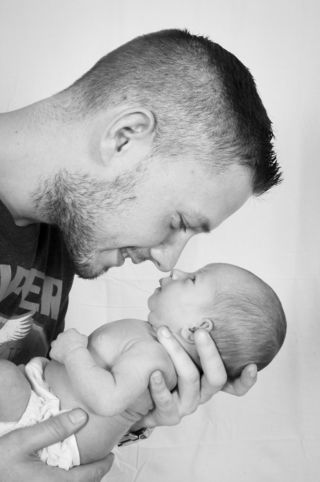
Source: 1899441 / Pixabay
Family leave policies vary widely and can be confusing. What allowances are imposed by the state? Do dads even know how much time they’re allowed? Why don’t fathers use all of their time when the benefits to their families are so great? In this guest post, Sima Bernstein, EdD, who has studied the problem at length, explains why, in her own words, “not using parental leave is a disgrace! ”, Especially for dads.
When I gave birth to my first child in the 1980s and faced a return to work after twelve weeks of (very partially) paid leave, I was demoralized and outraged. I was busy at night with anxious questions: How could I leave my newborn baby with someone I barely knew? How was I going to pay for child care with my meager salary in a prohibitively expensive city? And why was my employer, a company with a reputation for family-friendly work, so adamant about part-time work? I felt like my workplace and the system had let me down. This, despite a leave, the benefits of which were relatively generous at the time.
Maybe if I had been deprived of sleep less I would have realized that if anyone had gotten that little bit of “parental leave” it was my husband. But the man I married is a stoic who doesn’t complain. So, true to his habit, he made the most of what he had and made the most of the paternity leave allotted to him, for 24 hours! And then he moved on. For my part, I can still reconstruct my anger quite clearly more than 20 years later.
Fast forward to 2019, where the maternity / paternity leave situation has improved markedly, although far from perfect. According to a 2018 Bureau of Labor Statistics report, 88% of workers in the private sector are now offered some form of unpaid family leave (which includes, among other things, maternity and paternity leave); 16 percent had paid time off. Typically, however, many more women than men claim these parental leave benefits. For example, a study on taking paid leave of fathers in California notes that only 30 percent of all requests for paid family leave in California were made by men.
It is a shame not to use parental leave!
Any underuse of a policy that allows parents to care for a new baby (especially a relatively well-paid baby like the one in California) should rightly be called a disgrace. Studies of what happens after parents take time off point to a long list of positive results. For babies, these include lower infant mortality rates and better health.
For mothers, the good news includes a reduction in depressive symptoms, a faster return to the workforce, and a greater likelihood of returning to work than they had before giving birth. For fathers, paternity leave takers were more likely to care for their children and to take more care of children and housekeeping. The children of these fathers were also more likely to perceive greater parent-child closeness.
Why dads take abbreviated sheets
Considering all of these benefits, why are dads underusing the leaves? On the one hand, they may simply not know what they are entitled to. Studies have repeatedly reported poor knowledge of leave policies. (See the California and New Jersey reports for example.) Federal Leave Without Pay (FMLA) and state sponsored paid leave are subject to certain restrictions. But expecting fathers shouldn’t cancel the option of requesting time off without doing some research. It is worth taking a few minutes to study the available benefits. For more information on state paid vacation coverage, visit the National Partnership for Women and Families.
Problems unique to dads
There can also be some potentially negative side effects of parental leave for fathers that mothers don’t know about. A study in Spain, for example, found that fathers who took leave waited longer to have the next child than fathers who didn’t. The study – “Does paternity leave reduce fertility?”
However, there have been no similar reports in the United States. What has been found in American studies, however, is that men who can take paternity leave take short ones (less than two weeks). This is probably because many of these leaves are unpaid or only partially paid and fathers simply cannot afford the lost wages.
Stress can also play a role in abbreviated sheets. Some fathers also reported that pressures on the job, such as volume of work and deadlines, force them to limit departure time. And a recent and inspiring study suggests that men who request family leave can be stigmatized. In this Rutgers University study, “Penalizing Men for Requesting Family Leave,” student participants received (fictitious) transcripts from male employees and human resources personnel. Fathers who requested time off were characterized as poorer and more effeminate workers than those who did not.
Yet that handful of studies aside, almost all of the news is good news. The vast majority of research suggests that when fathers use their paternity leave, everyone benefits. So if you are a new dad with paternity leave benefits, use them to the max, which hopefully lasts over 24 hours. To use the lingo your future third grader might use: act like a tree and GO!
Copyright @ 2019 by Sima Bernstein
